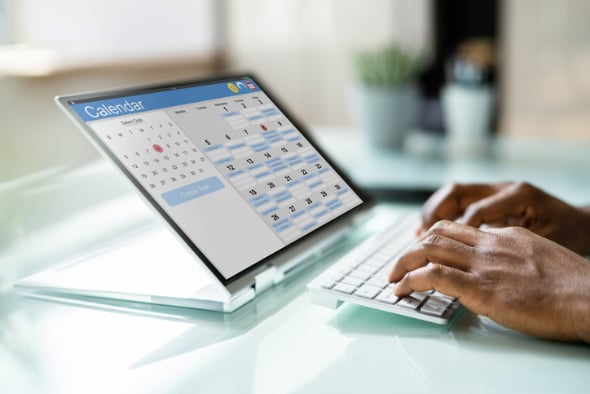What is rate parity?
Rate parity, or price parity, is a contractual agreement between a hotel or B&B and its distribution agents that its room rates will remain the same across all booking channels — including the property’s own website.
As you might expect, rate parity is highly beneficial to online travel agents (OTAs) that have access to a vast number of travellers and charge commission rates to property owners/operators.
There are two main types of rate parity:
1. Wide rate parity
With wide rate parity, a hotel or B&B agrees not to undercut the room prices that an OTA charges for their hotel. This agreement generally applies to all distribution channels.
2. Narrow rate parity
Narrow rate parity clauses allow hotels to offer lower rates than other OTAs, but not publicly through their own websites. With this type of rate parity, hotels can offer lower direct rates through indirect or offline channels such as email, phone booking and customer loyalty programs.
Rate parity made simple and manageable
Take the guesswork out of rate parity with Little Hotelier’s hotel management software designed for small hotels.
Learn moreWhat is rate parity in the hotel industry?
Rate parity is a term you’ll often hear in the hotel business. It’s all about keeping your room prices the same across the board. So, whether a guest books a room on your hotel’s website, through an online travel agency (like Expedia or Booking.com), or any other booking platform, they’ll see the same price.
The idea behind rate parity is to keep things fair and square. It means no booking channel can offer a cheaper rate and get an unfair advantage over others. It’s good for hotels because it helps them keep control over their pricing. And for guests, it means they can be confident they’re getting the best deal, no matter where they book.
However, rate parity has been the subject of much legislation recently. The European Court of Justice ruled against Booking.com’s use of price parity clauses, stating that such restrictions are unnecessary and could reduce competition. Additionally, the EU’s Digital Markets Act has given hotels more opportunities to compete with OTAs on pricing, leading to a shift in the competitive landscape.
Even with these developments, rate parity remains common in many markets. It helps manage what customers expect and keeps a hotel’s brand value consistent, but hotels now have more flexibility in certain regions.
Why is hotel rate parity important?
Rate parity helps you maintain control over your pricing strategy and prevents price wars between different booking channels. This protection of your bottom line helps keep your pricing strategy on track and maintains consistency across all platforms.
Rate parity also helps manage your guests’ expectations. If they see different prices for the same room on different websites, it can cause confusion and even frustration. By keeping your prices consistent, you’re giving your guests a clear and straightforward booking experience.
Plus, rate parity can help maintain your hotel’s brand value. If your rooms are consistently priced, it sends a message that your hotel is fair and trustworthy. This can help build your reputation and keep guests coming back. However, recent data shows that hotels in Europe are increasingly successful at achieving better direct rates than OTAs, with over 48% of direct rates outperforming third-party channels during peak seasons. This suggests that the landscape is shifting toward giving hotels more pricing flexibility.
Is rate parity mandatory for hotels?
WThe mandatory nature of rate parity depends heavily on your location and the specific OTA contracts you’ve signed. Traditionally, when you partner with an OTA, they would require you to agree to rate parity, preventing you from undercutting the rates they display for your rooms.
However, the legal landscape has changed dramatically in recent years. Many countries around the world once considered rate parity to be a completely legal business practice, but there has been a significant movement, particularly in Europe, to regulate or ban these practices.
Countries where rate parity is currently illegal or heavily restricted include:
- Austria
- France
- Italy
- Belgium
- Germany
- Switzerland
In other European Union countries, as well as Australia, New Zealand, the UK, Japan, and South Korea, regulations have been implemented to limit or ban strict rate parity clauses. Many OTAs in these regions have shifted to narrow rate parity clauses or removed them entirely.
In markets like North America and parts of Asia, rate parity agreements are still common, though regulatory scrutiny is increasing.
The pros and cons of hotel price parity
The idea behind rate parity is that it will level the playing field for all distribution agents. However, the perception is that it ultimately penalizes hotels and B&Bs that earn less revenue when the majority of their bookings come from larger distribution agents charging hefty commission rates.
Rate parity pros
It can boost your overall revenue by ensuring access to major OTA platforms. Rate parity has traditionally been a basic requirement in most agreements with OTAs. As a small accommodation provider, you need to partner with major players to increase your visibility and attract travellers from across the globe.
It can help prevent business complications. When your room rates are inconsistent across platforms, you run the risk of upsetting your customers and angering your distribution partners. Inconsistency in room rates also leads to overbookings, which is a customer service nightmare for any travel brand.
Rate parity cons
Paying commission on top of your lowest possible rate cuts into revenue. In small hotels, every dollar counts. While it’s fair for OTAs to ask for commission for promoting you to thousands of people every day, paying commission on top of your lowest possible rate cuts into revenue you would have earned had these people booked directly.
Rates need to be consistently monitored and updated. OTAs are known to change their rates according to factors like device, location, and market conditions. This puts tremendous pressure on small hotels to constantly monitor OTA rates and match their prices, which can be time-consuming.
Managing rate changes across multiple distribution channels can be challenging. When OTA channels aren’t directly linked to a small hotel’s PMS system through a channel manager, rate parity becomes even more difficult to manage.
How rate parity issues affect hotel revenue
While rWhile rate parity was originally designed to keep things fair, it has historically created challenges for hotel revenue management including:
- Losing control over pricing: Rate parity historically prevented hotels from adjusting prices to suit different strategies or market conditions.
- Reduced direct bookings: When guests saw identical prices across all channels, they often chose OTAs for the convenience or better rewards programs.
- Limited promotional flexibility: Hotels couldn’t offer personalised discounts or special rates to loyalty program members.
- Weakened customer loyalty: Without pricing advantages, guests had less incentive to book directly with their chosen property.
However, with the changing legal landscape, hotels are now better positioned to offer competitive direct rates, implement dynamic pricing strategies, and reward loyal customers with exclusive deals—all while maintaining healthy relationships with OTA partners.
How to make rate parity work for your hotel
Even with changing regulations, small hotels must still navigate the balance between OTA partnerships and direct bookings. Here are strategic approaches to maximize revenue while maintaining compliance:
1. Package your rooms to create added value
You can enhance your offering by adding elements like free parking, Wi-Fi, breakfast, or tickets to local events. While your OTA may be selling the room at a standard rate, your direct bookings can include valuable extras that justify the same price point while providing superior value.
2. Leverage narrow rate parity opportunities
In regions where narrow rate parity is allowed, or where parity clauses have been removed entirely, you can offer better rates to limited audiences:
- Facebook fans and social media followers
- Email newsletter subscribers
- Phone enquiries
- Loyalty program members
- Past guests through direct outreach
Remember to actively build these audiences through calls to action on your website, promoting exclusive access to special rates and promotions.
3. Use metasearch engines strategically
Metasearch engines like TripAdvisor are a great way to compete with OTAs for bookings. Through TripConnect, small hotels can bid to be featured at the top of the list. Because this is using a PPC model, it is likely to be cheaper than the commission paid to OTAs.
Metasearch engines are increasingly popular with consumers. Not only can they compare and search properties, but they can choose the channel they want to use to book these properties. More often than not, they will choose to book direct because it is seen as being more reliable.
4. Optimise your direct booking experience
The ease of booking directly with you must match or exceed the OTA experience. Ensure your website offers:
- Clear, user-friendly room selection with transparent pricing
- Secure, mobile-optimised booking process
- Real-time availability and instant confirmation
- Multiple payment options and flexible cancellation policies
5. Implement the right technology
With the changing regulatory landscape, invest in technology that helps you monitor and optimise your pricing strategy:
- Channel manager integration for seamless rate distribution
- Rate comparison tools
- Automated parity monitoring and alerts
- Dynamic pricing capabilities
By Dean Elphick
Dean is the Senior Content Marketing Specialist of Little Hotelier, the all-in-one software solution purpose-built to make the lives of small accommodation providers easier. Dean has made writing and creating content his passion for the entirety of his professional life, which includes more than six years at Little Hotelier. Through content, Dean aims to provide education, inspiration, assistance, and, ultimately, value for small accommodation businesses looking to improve the way they run their operations (and live their life).
Table of contents
“With the mobile app, you can run your business from wherever. It's incredibly user-friendly and straightforward. Little Hotelier also offers 24/7 customer service.”
Owner, Sundowner Twin Towns Motel








